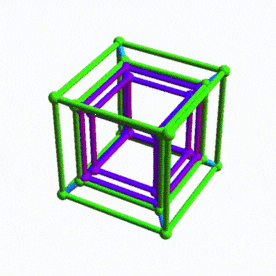 Principles of Space-Time-Matter: Cosmology, Particles and Waves in Five Dimensions (with James Overduin, World Scientific, 2018). A summing up of the prospects for unification between relativity and particle physics based on the extension of Einstein’s theory of General Relativity to five dimensions. This book brings the field up to date and details many new developments and connections to particle theory and wave mechanics in particular. It was in largely finished form at the time of Paul Wesson’s untimely death in 2015, and has been completed and expanded by his former student and longtime collaborator, James Overduin. Also available from amazon.
Principles of Space-Time-Matter: Cosmology, Particles and Waves in Five Dimensions (with James Overduin, World Scientific, 2018). A summing up of the prospects for unification between relativity and particle physics based on the extension of Einstein’s theory of General Relativity to five dimensions. This book brings the field up to date and details many new developments and connections to particle theory and wave mechanics in particular. It was in largely finished form at the time of Paul Wesson’s untimely death in 2015, and has been completed and expanded by his former student and longtime collaborator, James Overduin. Also available from amazon.
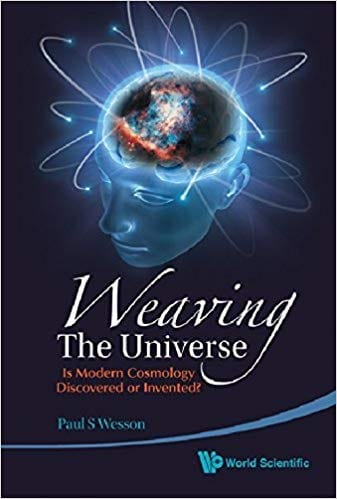 Weaving the Universe: Is Modern Cosmology Discovered or Invented? (World Scientific, 2010). This new book is a thorough but short review of the history and present status of ideas in cosmology. It is aimed at a broad audience, but will contain a few equations where needed to make the argument exact. The coverage of cosmological ideas will focus mainly on the period from the early 1900s when Einstein formulated relativity and when his colleague Sir Arthur Eddington was creating relativistic models of the universe. It ends with the completion of the Large Hadron Collider in late 2008, having surveyed modern ideas of particle physics and astrophysics. To organize the large body of information involved, the book uses the life of Eddington and the weaving together of ideas in cosmology as themes. This should provide a clear and entertaining account presented in a historical context that leads up to the present day. Also available from amazon.
Weaving the Universe: Is Modern Cosmology Discovered or Invented? (World Scientific, 2010). This new book is a thorough but short review of the history and present status of ideas in cosmology. It is aimed at a broad audience, but will contain a few equations where needed to make the argument exact. The coverage of cosmological ideas will focus mainly on the period from the early 1900s when Einstein formulated relativity and when his colleague Sir Arthur Eddington was creating relativistic models of the universe. It ends with the completion of the Large Hadron Collider in late 2008, having surveyed modern ideas of particle physics and astrophysics. To organize the large body of information involved, the book uses the life of Eddington and the weaving together of ideas in cosmology as themes. This should provide a clear and entertaining account presented in a historical context that leads up to the present day. Also available from amazon.
 The Light/Dark Universe: Light from Galaxies, Dark Matter and Dark Energy (with James Overduin, World Scientific, 2008). “The book is beautifully written in a lucid, very readable style. The first three chapters, about the classic version of Olbers’ paradox pertaining to the visible part of the spectrum, will be thoroughly enjoyed
The Light/Dark Universe: Light from Galaxies, Dark Matter and Dark Energy (with James Overduin, World Scientific, 2008). “The book is beautifully written in a lucid, very readable style. The first three chapters, about the classic version of Olbers’ paradox pertaining to the visible part of the spectrum, will be thoroughly enjoyedby all ‘informed readers interested in astronomy’ for whom the book is intended. In fact, it is the best monograph on the paradox that I know of. In the later chapters concerning the search for signatures of dark energy and dark matter – which closely follow the authors’ monumental review ‘Dark Matter and Background Light’ in Physics Reports (2004) – the account necessarily becomes more technical and many readers may be expected to skip the details here. Nevertheless, Overduin and Wesson succeed in keeping the main line of reasoning crystal-clear. With its astounding insights into today’s cosmology and the dark building blocks of the Universe, this part of the book is bound to be a real eye-opener to the general reader. In parallel, for cosmologists and those who want to delve deeper into the subject I trust it will be (thanks also to the encyclopedic bibliography) a first-rate guide for years to come.” [Ko van der Weele, Contemporary Physics] Also available from amazon.
 Five-Dimensional Physics: Classical and Quantum Consequences of Kaluza-Klein Cosmology (World Scientific, 2006). Extra dimensions — beyond space and time — are the best methods for unifying gravity with particle physics. The basic extension is to five dimensions (5D), as in the induced-matter and membrane theory. This descriptive text gives an up-to-date account of the classical and quantum consequences of 5D physics. It includes topics that range from Einstein’s original theory of relativity to modern views on matter. The book is mathematically precise and focuses on new ideas which appeal to readers. Examples of new ideas are: The big-bang universe, which is curved by matter in 4D, may be viewed as a smooth and empty world in 5D; the uncertainty of quantum interactions in spacetime may be regarded as the consequence of deterministic laws in higher dimensions. This book will interest people who think about the ‘meaning of things’. Also available from amazon.
Five-Dimensional Physics: Classical and Quantum Consequences of Kaluza-Klein Cosmology (World Scientific, 2006). Extra dimensions — beyond space and time — are the best methods for unifying gravity with particle physics. The basic extension is to five dimensions (5D), as in the induced-matter and membrane theory. This descriptive text gives an up-to-date account of the classical and quantum consequences of 5D physics. It includes topics that range from Einstein’s original theory of relativity to modern views on matter. The book is mathematically precise and focuses on new ideas which appeal to readers. Examples of new ideas are: The big-bang universe, which is curved by matter in 4D, may be viewed as a smooth and empty world in 5D; the uncertainty of quantum interactions in spacetime may be regarded as the consequence of deterministic laws in higher dimensions. This book will interest people who think about the ‘meaning of things’. Also available from amazon.
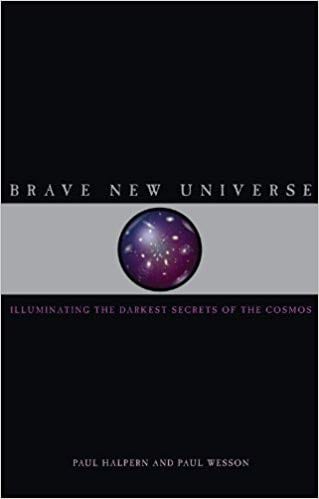 Brave New Universe: Illuminating the Darkest Secrets of the Cosmos (with Paul Halpern, Joseph Henry Press, 2006). “‘Not another book about the Big Bang!’ I hear you say. Well, yes, in a way, but there’s much to recommend “Brave New Universe: Illuminating the Darkest Secrets of the Cosmos.” In the first place, there is (depending on how close your ear is to the ground) a lot of new news about the universe; in the second, this book makes an excellent primer. The authors, Paul Halpern and Paul Wesson, are both physics professors but not the kind who don’t care whether the public understands them or not. They’re blessedly lucid. If you’ve always wanted to know what physicists mean when they talk about such things as CP invariance or left-handed neutrinos, it‘s all here, plain as day.” [Los Angeles Times] Also available from amazon.
Brave New Universe: Illuminating the Darkest Secrets of the Cosmos (with Paul Halpern, Joseph Henry Press, 2006). “‘Not another book about the Big Bang!’ I hear you say. Well, yes, in a way, but there’s much to recommend “Brave New Universe: Illuminating the Darkest Secrets of the Cosmos.” In the first place, there is (depending on how close your ear is to the ground) a lot of new news about the universe; in the second, this book makes an excellent primer. The authors, Paul Halpern and Paul Wesson, are both physics professors but not the kind who don’t care whether the public understands them or not. They’re blessedly lucid. If you’ve always wanted to know what physicists mean when they talk about such things as CP invariance or left-handed neutrinos, it‘s all here, plain as day.” [Los Angeles Times] Also available from amazon.
 Dark Sky, Dark Matter (with James Overduin, Institute of Physics/CRC Press, 2003). Right after ‘Why is the sky blue?,’ ‘Why is the sky dark?’ is the next most commonly asked question kids, and non-kids, too, ask of parents, in particular, and science in general … the dilemma of the question actually became tougher to explain, resulting in what has become known as Olbers’ paradox. Olbers, a Prussian astronomer, postulated in 1823, ‘given that the Universe is unbounded, governed by the standard laws of physics, and populated by light sources of constant intensity, the simple cube law of volumes and numbers implies that the sky should be ablaze with light. Obviously, this is not so.’ Dark Sky, Dark Matter takes this paradox and runs with it. “The story of how all these exotic ingredients can be constrained by modern data is well told, and contains some interesting material. Overall, this book may well be consulted by graduate students seeking details of these topics.” [John Peacock, The Observatory] Also available from amazon.
Dark Sky, Dark Matter (with James Overduin, Institute of Physics/CRC Press, 2003). Right after ‘Why is the sky blue?,’ ‘Why is the sky dark?’ is the next most commonly asked question kids, and non-kids, too, ask of parents, in particular, and science in general … the dilemma of the question actually became tougher to explain, resulting in what has become known as Olbers’ paradox. Olbers, a Prussian astronomer, postulated in 1823, ‘given that the Universe is unbounded, governed by the standard laws of physics, and populated by light sources of constant intensity, the simple cube law of volumes and numbers implies that the sky should be ablaze with light. Obviously, this is not so.’ Dark Sky, Dark Matter takes this paradox and runs with it. “The story of how all these exotic ingredients can be constrained by modern data is well told, and contains some interesting material. Overall, this book may well be consulted by graduate students seeking details of these topics.” [John Peacock, The Observatory] Also available from amazon.
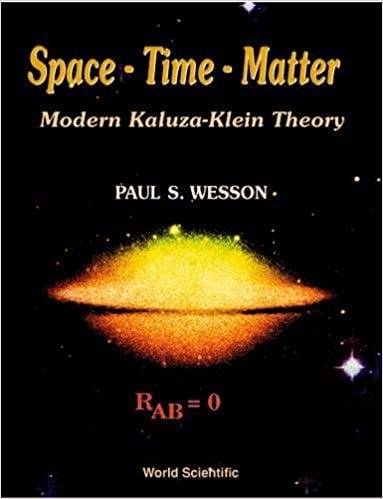 Space-Time-Matter: Modern Kaluza-Klein Theory (World Scientific, 1999; 2nd edition 2007). Einstein endorsed the view of Kaluza that gravity could be combined with electromagnetism if the dimensionality of the world is extended from 4 to 5. Klein applied this idea to quantum theory, laying a basis for the various modern versions of string theory. Recently, work by a group of researchers has resulted in a coherent formulation of 5D relativity, in which matter in 4D is induced by geometry in 5D. This theory is based on an unrestricted group of 5D coordinate transformations that leads to new solutions and agreement with the classical tests of relativity. This book collects together the main technical results on 5D relativity, and shows how far we can realize Einstein’s vision of physics as geometry. Also available from amazon.
Space-Time-Matter: Modern Kaluza-Klein Theory (World Scientific, 1999; 2nd edition 2007). Einstein endorsed the view of Kaluza that gravity could be combined with electromagnetism if the dimensionality of the world is extended from 4 to 5. Klein applied this idea to quantum theory, laying a basis for the various modern versions of string theory. Recently, work by a group of researchers has resulted in a coherent formulation of 5D relativity, in which matter in 4D is induced by geometry in 5D. This theory is based on an unrestricted group of 5D coordinate transformations that leads to new solutions and agreement with the classical tests of relativity. This book collects together the main technical results on 5D relativity, and shows how far we can realize Einstein’s vision of physics as geometry. Also available from amazon.
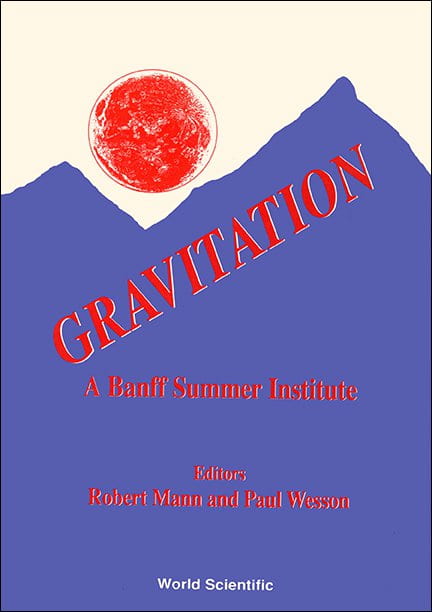
Gravitation: a Banff Summer Institute (with Robert Mann, World Scientific, 1991). Bringing together some of the top researchers gravitational physics, the 1990 Banff Summer Institute on Gravitation focussed on three of the most exciting areas of research in this subject today: Cosmology, Quantum Gravity and Tests of Gravitational Theory. Besides covering the most up-to-date developments, special emphasis was placed upon the interdisciplinary aspects of each of these topics. The pedagogical character of the lectures is designed to bring graduate students up to the forefront of research.
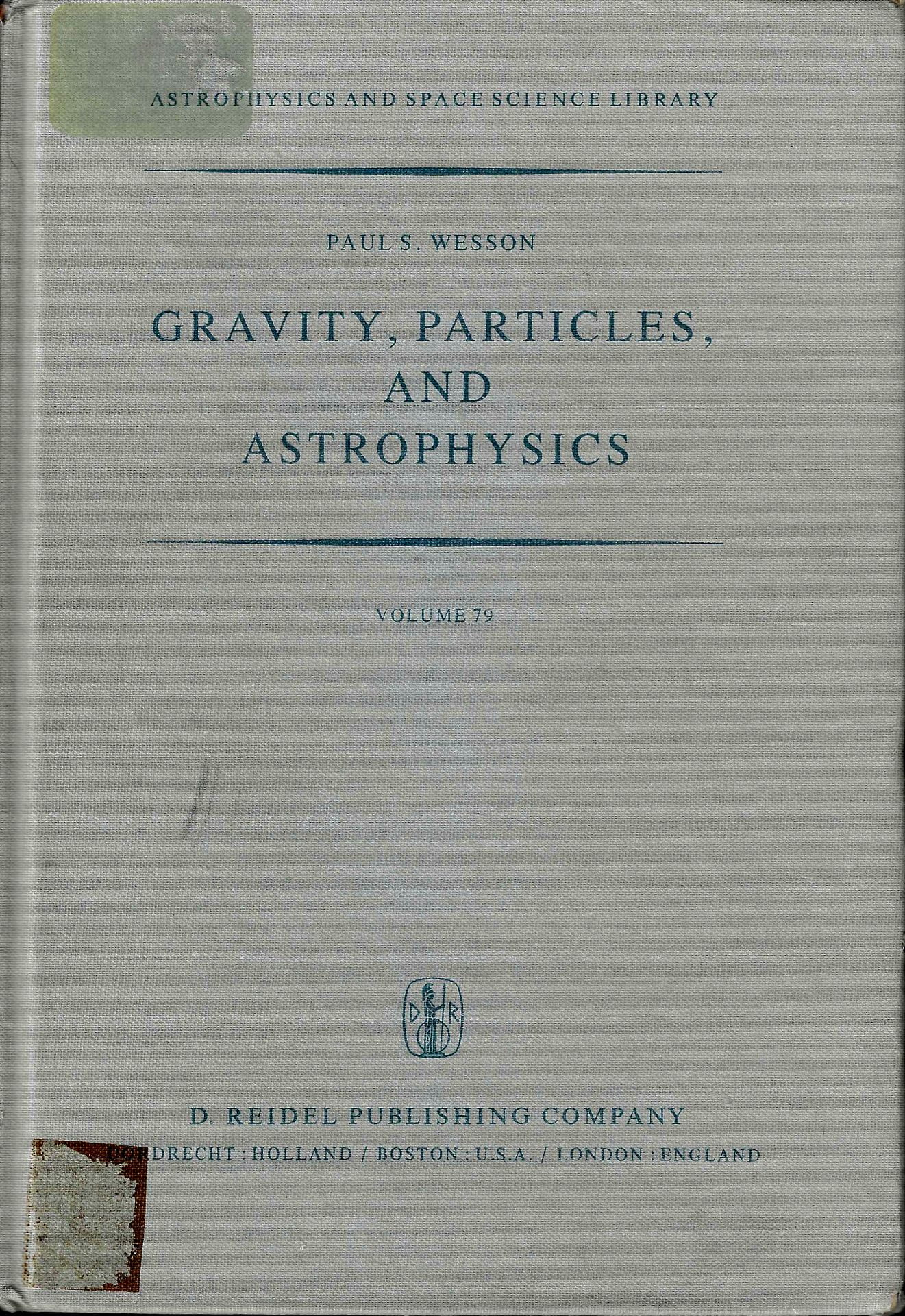 Gravity, Particles, and Astrophysics (D. Reidel Publishing Co., 1980). This book deals with the relationship between gravitation and elementary particle physics, and the implications of these subjects for astrophysics … the present book may be regarded as a companion to Cosmology and Geophysics. There is some overlap as regards the discussion of G-variability, but the emphasis in the present book is on astrophysics while the emphasis in the other one is on geophysics … The first part (Chapters 1-7) represents a relatively non-technical overview of the subject, while the second part (Chapters 8-11) represents a technical examination of the most important aspects of non-Einsteinian gravitational theory and its relation to astrophysics.
Gravity, Particles, and Astrophysics (D. Reidel Publishing Co., 1980). This book deals with the relationship between gravitation and elementary particle physics, and the implications of these subjects for astrophysics … the present book may be regarded as a companion to Cosmology and Geophysics. There is some overlap as regards the discussion of G-variability, but the emphasis in the present book is on astrophysics while the emphasis in the other one is on geophysics … The first part (Chapters 1-7) represents a relatively non-technical overview of the subject, while the second part (Chapters 8-11) represents a technical examination of the most important aspects of non-Einsteinian gravitational theory and its relation to astrophysics.
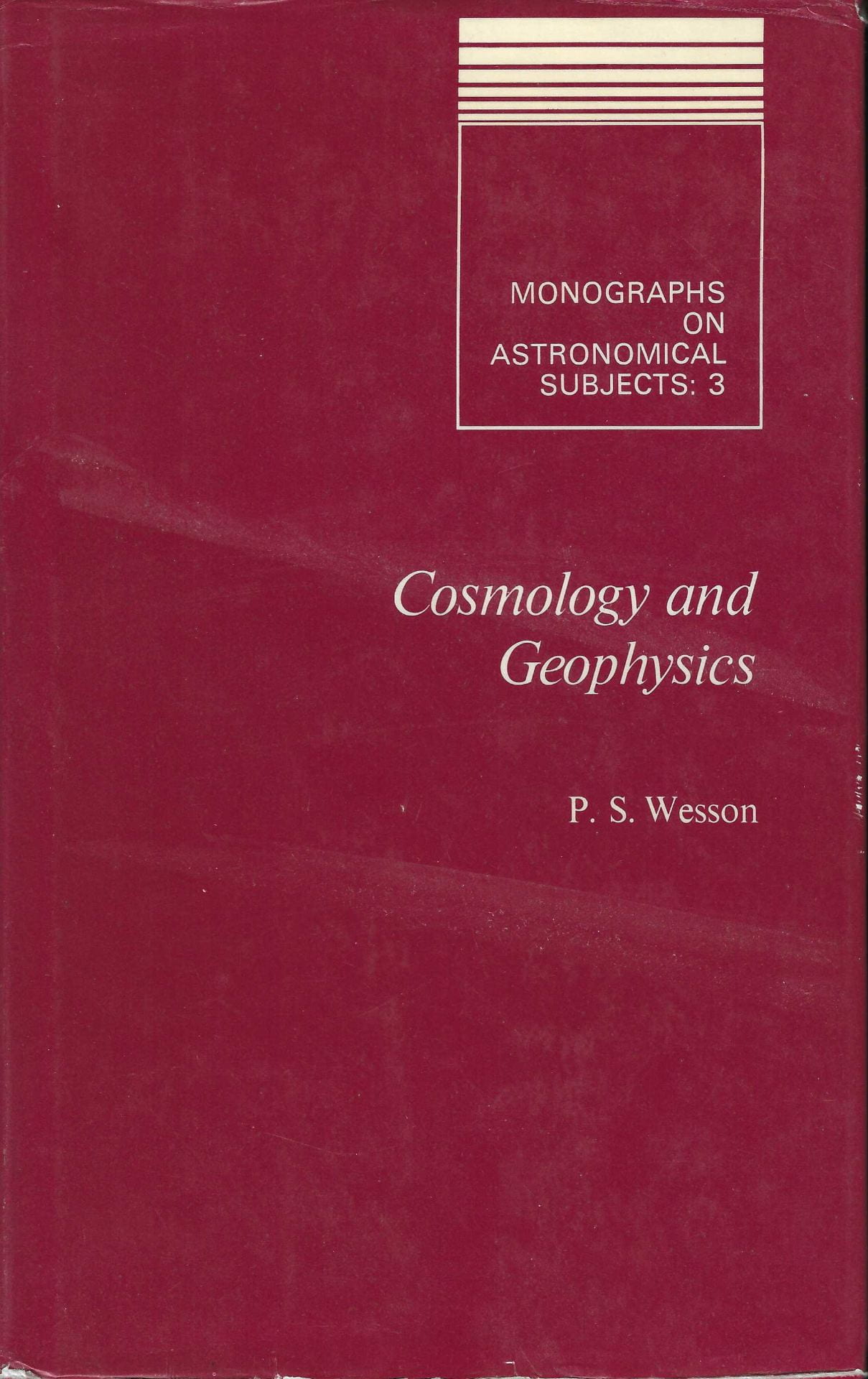
Cosmology and Geophysics (Oxford University Press, 1978). This book aims to examine the inter-relationship between modern theories of gravitation and astronomy, and their effects on the Earth and other planets … A summary is given of those theories of gravity in which the Newtonian gravitational parameter G can be variable and in which the strength of gravity decreases with time … The effects and observational consequences of the variable-G and other theories for the Earth, such as modification of the spin rate and an expected expansion, are discussed.
